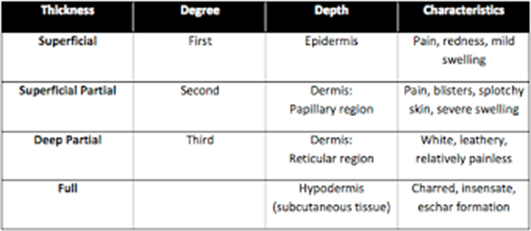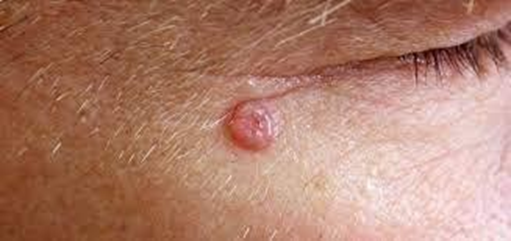A nurse is caring for a preschooler who has a partial-thickness burn on her right forearm. Which of the following findings should the nurse expect? (Select all that apply.)
Blisters
Wound blanches with pressure
Dry face
Intact epidermis
Sensitive to touch
Correct Answer : A,B,E
Choice A rationale: partial-thickness burns are usually characterized by the formation of blisters as a result of increased capillary permeability resulting in edema formation separating the epidermis from the dermis.
Choice B rationale: wound blanching with pressure is expected in partial-thickness burns due to compromised blood circulation.
Choice C rationale: This is not a typical finding in a partial-thickness burn.
Choice D rationale: this is incorrect since partial-thickness burns involve damage to the epidermis.
Choice E rationale: nerve endings are damaged in partial-thickness burns thus making the area sensitive to touch.

Nursing Test Bank
Naxlex Comprehensive Predictor Exams
Related Questions
Correct Answer is A
Explanation
Choice A rationale: Transparent dressings are commonly used for stage I pressure ulcers as they provide a protective barrier against external contaminants while allowing for visualization of the wound. This type of dressing helps maintain a moist environment to facilitate healing.
Choice B rationale: Hydrogel dressings are typically used for wounds with necrotic tissue or those that require a moist environment. They may not be the first choice for a stage I pressure ulcer with intact skin.
Choice C rationale: Wet-to-dry dressings are often used for wounds with debris or infection. They involve placing moist gauze into the wound and allowing it to dry, promoting debridement. This is not suitable for an intact stage I pressure ulcer.
Choice D rationale: Alginate dressings are absorbent and are more appropriate for wounds with moderate to heavy exudate. They may not be necessary for a stage I pressure ulcer with minimal or no exudate.
Correct Answer is A
Explanation
Choice A rationale: Basal cell carcinoma commonly presents as a small, translucent papule with rolled borders. It may have a pearly or shiny appearance and often develops on sun-exposed areas, such as the nose.
Choice B rationale: This description is more characteristic of melanoma, not basal cell carcinoma.
Choice C rationale: This description may be more indicative of squamous cell carcinoma.
Choice D rationale: This description does not align with the typical presentation of basal cell carcinoma.

Whether you are a student looking to ace your exams or a practicing nurse seeking to enhance your expertise , our nursing education contents will empower you with the confidence and competence to make a difference in the lives of patients and become a respected leader in the healthcare field.
Visit Naxlex, invest in your future and unlock endless possibilities with our unparalleled nursing education contents today
Report Wrong Answer on the Current Question
Do you disagree with the answer? If yes, what is your expected answer? Explain.
Kindly be descriptive with the issue you are facing.
